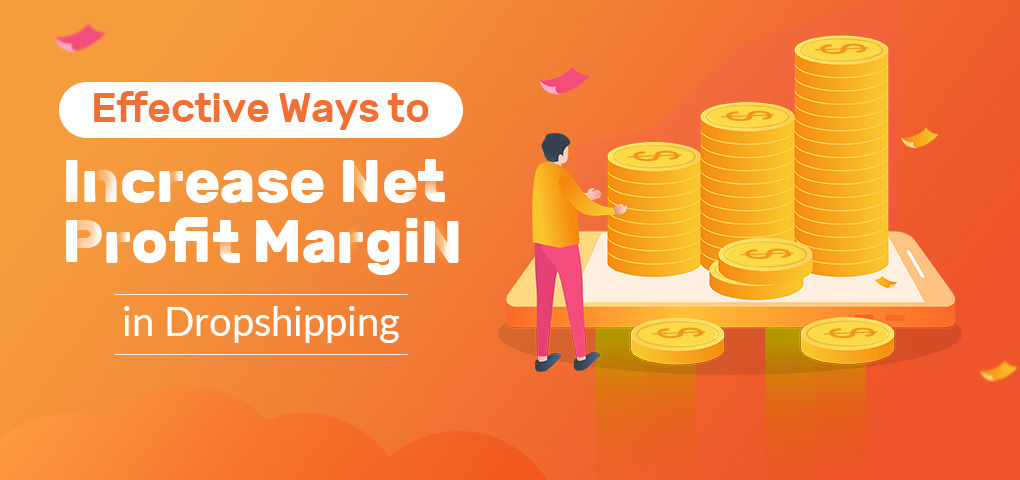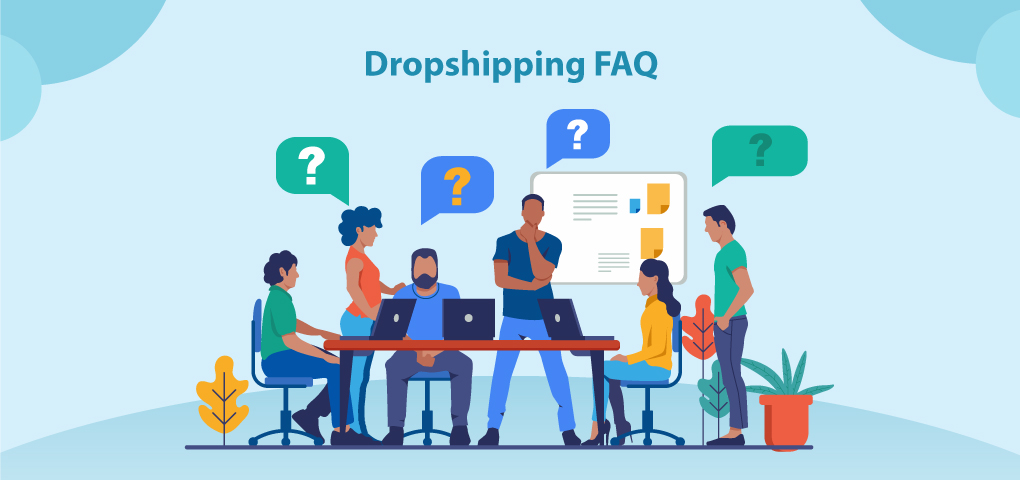If you're running a dropshipping business, you might have heard about the net profit margin a lot. So, what is the net profit margin? In layman's language, the net profit margin is defined as the actual profit you are getting out of all the revenue collected. You might be collecting a huge revenue, but the net profit might not satisfy you. The net profit margin helps you identify the key areas of services, which are costing more, so you can adjust them in your favor.
What Is Net Profit Margin?
net profit margin is your net profits (Excluding all types of expenditures from the generated revenue) as a percentage of the total revenue collected. Net profit is the figure that appears at the bottom of your income statement. This figure excludes all kinds of running business expenses from the total income or revenue of a business. So. net profit margin, also known as net profit margin Ratio, tells you how much of your income goes into your pocket and how much you spend on the services.
How to Calculate Net Profit Margin?
Now, you'd be wondering how to calculate the net profit margin. A net profit margin formula is all you have to learn. And it is as simple as:
Net Profit = Revenue - (Purchasing Cost + Operating Expenses + Interests + Taxes);
Net Profit Margin = (Revenue - Purchasing Cost - Operating Expenses - Interests - Taxes) / Revenue x 100%
As discussed earlier, the net profit is extracted from the total revenue by subtracting all kinds of purchasing, operating, and running costs.
The purchasing cost is also termed as Cost of Goods Sold (COGS) in accounting terms.
If you don't want to trouble yourself this much, you can easily access any online net profit margin calculator. There you only have to input the numbers that the program asks, and it'll tell you the exact net profit as a percentage of your total revenue.
Gross Profit Margin vs Net Profit Margin
Gross Profit Margin vs net profit margin is another debate often heard in business circles. There isn't much difference between the two. In the Gross Profit Margin, while calculating the net profit margin, the only Cost of Goods Sold (COGS) is subtracted from the total revenue generated. Then that profit is divided by total revenue to calculate the Gross Profit Margin. While in the net profit margin, operating expenses, interests, and taxes are also subtracted from the total revenue and Cost of Goods Sold (COGS).
Utility Limitations of Net Profit Margin
However, the net profit margin has some limitations in its exercise. Firstly, the net profit margin doesn't show the exact numbers of your profits. It only depicts the percentage of total revenue that gets into your account after all the services are paid for.
Secondly, two companies' performance from different sectors can't be compared based on their net profit margins. For example, a company from the food sector usually gives high revenue, yet its net profit margin may be low because of high operating costs. Contrarily, an automotive company may show low revenues but a high net profit margin because of its low operating cost. So, it is only possible to compare companies from the same industry and the same business model based on their net profit margins.
What Is a Good Net Profit Margin?
By now, a question must be popping up in your head, ‘what is a good net profit margin?' There is no fixed net profit margin, which is good for your company. Your company might be doing well in one department, let's say sales, but your running cost might be higher than it should be, or you might be good at keeping the business running at low cost, but your sales are plunging now and then; hence your net profit margin is never up. So, it depends upon several factors, including your location, the industry you're a part of, and many other unforeseen circumstances. However, what we can tell you is how to increase the net profit margin.
How to Increase Net Profit Margin?
Till now, you would have understood that your net profit margin depends upon two things; your sales and your expenditures. We will come to the sales later. Let's come to the expenditures first. For any dropshipping business, some expenditures are unavoidable. You have to pay the taxes and interests of your company. You have some running costs of operating an online website and its database.
And of course, you have to purchase goods before dropshipping them to your customers. These areas can be improved to cut down your expenditures, which will automatically increase your net profit, which will add up to your net profit margin. The following are some suggestions on how to increase the net profit margin.
· Now come back to sales. Sales are the part that has to do the most with your revenues. You can make more sales by improving your website or expanding your audience through marketing. This boost in the sale will be seen in your revenues, and ultimately your net profit margin will increase.
· Each expenditure plays its role in pulling down your net profit margin. So, cutting down each of them will increase your net profit margin. For example, you can choose the free dropshipping website like SaleYee.com.
· You can find a supplier who provides goods at a lower price.
· In importing goods, you can source your products from a country that puts fewer duties on its exports.
· Increasing your goods' prices is another way of boosting your revenues, but it might negatively impact your sales if you put a hefty price tag that doesn't compete with the market.
· Another not highly appreciated way of lowering Costs of Goods Sold (COGS) is to lower the quality of the products and keeping the same price tag. Just like the above point, this can also negatively hamper your business. But if this down gradation comes under the standard point, it can be done to improve the net profit margin.
Wrapping up
Knowing your net profit margin can help your business adjust its services in a way that aligns in favor of growth. You should always plan your future policies on an empirical basis. Studying your net profit margin can help you pinpoint the shortcomings in your company operations and upgrade your business model to earn maximum profit.





